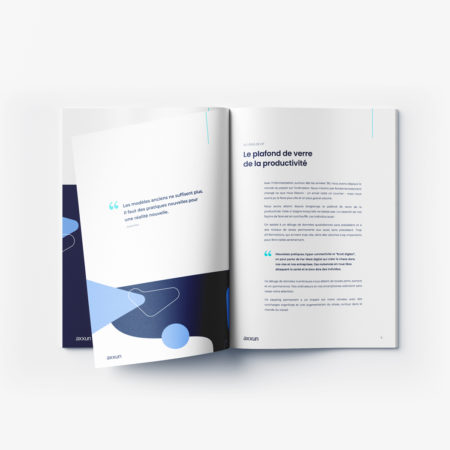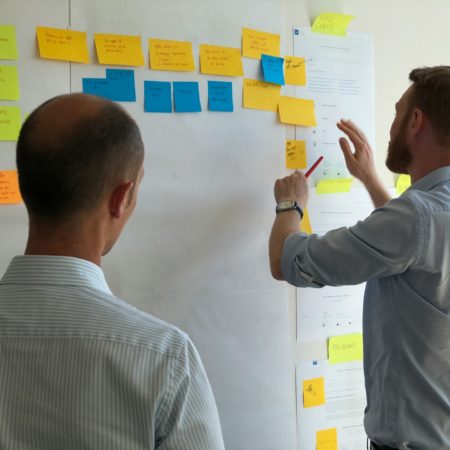
Why worry about workspace?
The quality of the workspace has a direct impact on the productivity and efficiency of teams and the company. Even before deploying major digital change plans and substantial investments, thinking about and transforming workspaces is often a good first step.
It's not about creating signature spaces a la Google or any other multinational corporation featured in architecture magazines. If you can afford it, why not? In that case, make sure that the result is not that of a trendy interior architect, but of a precise reflection on what you expect and the devices to be put in place; the architect will take care of the "setting to music"). If you can't afford it, a good space is above all a well-thought-out space. It can be both inexpensive and highly profitable.
Your workspaces must guarantee two things:
- the pleasure of spending your days here. It should feel like home, only better...
- a quality of space adapted to each type of activity: productivity, concentration, creativity, socializing, meetings, etc.
In the age of video-conferencing, it's hard to be calm in a poorly-configured open-plan office. It's hard to be creative in a neurasthenic office, devoid of the tools to think and face - literally - your ideas. Do you have a flipchart? Its physical limits will define those of your creativity: 70×120 cm. And what better way to break the energy down than with sessions that start 15 minutes late because of poor equipment (beamer from the 2000s, incompatible connectors, wifi code not found, etc.).
Societal paradigm shifts
The vision and expectations surrounding working conditions and the workplace, mobility and flexibility in our society have changed radically in just a few years. These changes must transform our conception of the workspace.
Employees who prefer to work from home are a good indicator that your workspace may not be up to scratch. Perhaps they sometimes need to do in-depth work that they can't do in the office.
Set the spatial conditions for success, as much as the technological or cultural ones.
The rise of coworking spaces is partly justified by the fact that they offer an attractive (professional) lifestyle, an atmosphere that appeals and makes people want to work there. Productivity isn't just the result of what happens between the chair and the screen. It's also what happens around it.
Workspace: a profitable investment
Why would you spend money to create a quality workspace in the first place? Because creating one is a sound investment decision.
Based on their Workplace Performance Index® methodology, Gensler 's periodic studies reveal a link between workplace quality and the level of innovation employees attribute to their company.
When meeting a customer, supplier or recruiting a new employee, the environment plays an important role. It can reflect your company's ability to reinvent itself. Premises can be representative of work or management methodologies. Candidates can then project themselves, while partners or customers can simply show confidence and identify that your company's values are well applied and shared.
How can you rethink your work environment?
Only by putting teams first and including them as early as possible in the planning process can you create a productive and efficient workspace. Don't just present concepts from architects or interior designers.
Here are some ideas for creating a healthier, more productive workspace.
1. A space for every job
An open-plan workspace may improve collaboration, but it can also reduce productivity by 66% as a result of distractions caused by conversations and other noise pollution. Provide your employees with areas where they can isolate themselves, to give them the time they need to concentrate on specific tasks in complete tranquillity.
Atmosphere is an important component of productivity: the better you feel in a work environment, the more efficiently you work there too.
Four major criteria contribute to the creation of a stylish ambience: the sound environment, lighting, colors and the general configuration of the space. All these elements are related to the company's activity. While some tasks require complete silence, others can be stimulated by a light background sound. Similarly, certain colors impact certain faculties, while others paralyze them, so it's best to find out about colors before painting a wall.
It's not always possible to have separate rooms. You can create and separate spaces in the same room with furniture (bookshelves, movable walls, booths for seclusion or meeting "aquariums", etc.).
2. From entrance to toilet
Think globally: the workspace doesn't stop at the office. Take into account all premises, even those that are not at home: home (teleworking) or the café around the corner, for example. Many people find it more stimulating to think and write in a nice café than at the office.
Ideas and solutions can arise at any time. And most of all, anywhere, and often not at your workplace.
Cafeterias and breakout areas are particularly important places to equip. How many informal discussions by the coffee machine have generated new ideas, provided a solution or structured projects? It's important to be able to note, draw and diagram without delay:
Great ideas flourish on large surfaces.
Who doesn't constantly come up against the limited dimensions of a flipchart when brainstorming or creating a mind map? Every wall can be a whiteboard: ferro-magnetic whiteboard paint or glue-on whiteboard rolls cost next to nothing.
Even toilets can't escape your notice. Dirty, dark, noisy? Or do you prefer a pleasant place, where you can pass through in complete privacy?
We know a company that uses the inside of toilet cubicle doors for its internal communications: the only place where you can be sure that whatever you put on there will be read. We had to think of it!
3. Decoration and informality
Don't be too pragmatic when furnishing your offices. Decorations with no real functional purpose, such as photos or mementos, can contribute to a better atmosphere and the well-being of your employees.
Research has also shown that the presence of plants increases productivity. Green in the office enhances concentration, improves air quality and reduces stress.
Studies also show that a little clutter is good for creativity. Keep your spaces tidy and well organized, while leaving room for a slightly "bohemian" atmosphere.
4. Prerequisites: ergonomics and health
Optimization must necessarily include the notion of ergonomics through office furniture. This is essential for the well-being and productivity of everyone at work. What's more, it reduces work-related accidents, illnesses and pain (RSI).
Quality seating is a must. Variable-height desks provide real comfort by allowing you to change working positions. This equipment is not so expensive: sit-stand desks from Chf 400 at Ikea.
When renewing your hardware, don't skimp on the quality of keyboards, mice and, above all, screens. But above all, integrate IT, hardware and software into your thinking: it's hard to enjoy a focus room if the computer can't move from its desk. It's hard to make the most of "downtime" like a train journey, or places to think "out of the box" like a café, if work tools are dependent on the local IT network, or if device security isn't guaranteed outside the office.
Conclusion
The quality of the spatial environment is a factor not to be overlooked. It has a proven positive impact on productivity, creativity, motivation, health and the general state of mind of teams.
The digitalization of our society has changed the nature of our activities, and expectations in terms of working conditions have greatly evolved. Workspaces need to evolve accordingly, otherwise they will contribute to a company's loss of productivity and attractiveness.







